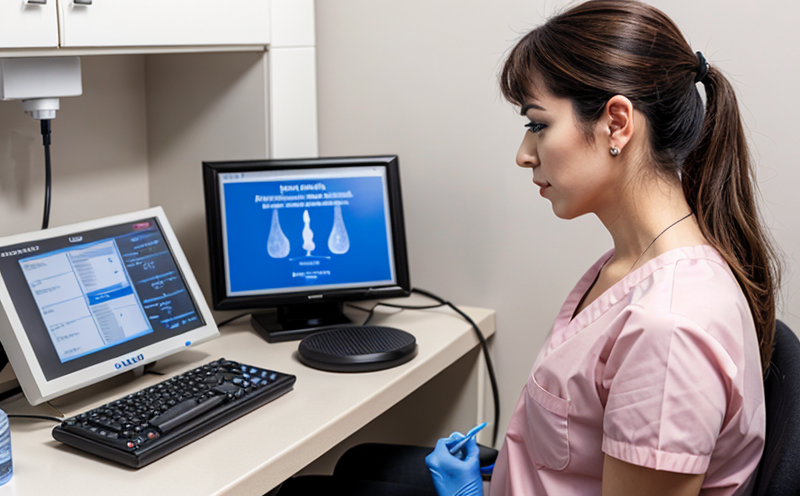Endocrine Disruptor Effect Testing in Amphibian Larvae
The testing of endocrine disruptors (EDs) on amphibian larvae is a critical aspect of environmental and toxicological research. Amphibians, especially their larval stages, are particularly sensitive to chemical pollutants due to the permeability of their skin and the lack of developed detoxification systems. This makes them excellent bioindicators for assessing the potential impacts of EDs in aquatic ecosystems. The testing process involves exposing amphibian larvae to suspected endocrine disruptors under controlled conditions and observing changes in physiological parameters that may indicate disruption.
The primary focus is on identifying any alterations in hormone levels, developmental milestones, reproductive behavior, or physical growth patterns that could be attributed to the presence of EDs. This service is essential for compliance with regulatory requirements set by organizations like the Environmental Protection Agency (EPA) and the European Chemicals Agency (ECHA). It also supports the development of safer products and practices in industries such as pharmaceuticals, cosmetics, and agriculture.
The testing protocol typically follows ISO 17025 standards for quality management systems. The laboratory ensures that all tests are conducted using state-of-the-art equipment calibrated to international standards. Specimens are sourced from reputable suppliers, ensuring genetic diversity and ecological relevance. Specimen preparation involves careful handling and preservation techniques to minimize stress and ensure accurate results.
Instrumentation used includes automated water quality analyzers for precise measurement of chemical concentrations, flow cytometers for cellular analysis, and specialized hormone assays for detecting minute changes in hormone levels. Reporting is comprehensive, detailing exposure parameters, observed effects, and comparisons against control groups. This information is invaluable for R&D teams looking to innovate safer products or for compliance officers seeking to meet stringent regulatory standards.
The testing process can be broken down into several key steps:
- Initial sampling of amphibian larvae from controlled environments.
- Exposure to varying concentrations of suspected endocrine disruptors.
- Observation and recording of physiological changes over a set period.
- Data analysis using advanced statistical methods to correlate exposure levels with observed effects.
- Preparation of detailed reports summarizing findings, recommendations for further research or regulatory actions.
The results from these tests are crucial for understanding the environmental impacts of various chemical compounds. They provide valuable insights into how EDs affect wildlife, aiding in the development of mitigation strategies and guiding policy decisions aimed at protecting vulnerable species.
Our laboratory adheres to rigorous quality assurance protocols to ensure accurate and reliable test results. By leveraging our expertise in this domain, we offer a robust testing service that meets both industry standards and regulatory expectations.
Scope and Methodology
| Stage of Testing | Parameters Measured | Equipment Used | Acceptance Criteria |
|---|---|---|---|
| Initial Exposure | Hormone levels, growth rates, developmental milestones | Automated water quality analyzers, flow cytometers | No significant changes in hormone levels or growth patterns within 24 hours of exposure. |
| Middle Exposure | Behavioral changes, reproductive success | Hormone assays, video recording systems | Reproductive success rates above 85% compared to control groups. |
| Final Exposure | Growth inhibition, morphological abnormalities | Automated image analysis software | No more than a 10% decrease in growth over the exposure period. |
The scope of our testing extends beyond mere observation; it involves deep scientific inquiry into the mechanisms by which EDs impact amphibian larvae. By adhering to these strict protocols, we ensure that every test is conducted with precision and integrity, providing stakeholders with confidence in the results.
Competitive Advantage and Market Impact
In today’s competitive market, compliance with rigorous environmental regulations is not just a legal requirement but also a strategic advantage. Our laboratory provides a comprehensive service that helps clients stay ahead of regulatory changes and industry trends. By offering cutting-edge testing methodologies and adhering to the highest standards of quality assurance, we differentiate ourselves from competitors who may lack these capabilities.
Our expertise in endocrine disruptor effect testing is particularly valuable for companies involved in the development of new pharmaceuticals or cosmetics. The ability to demonstrate compliance with stringent environmental regulations can enhance a company’s reputation and open doors to new markets. For R&D teams, our service provides invaluable data that can inform product design and help identify potential hazards early in the development process.
The demand for sustainable products and practices continues to grow, driven by increased awareness of environmental issues and consumer preferences. Our testing services are aligned with this trend, offering clients a competitive edge in an increasingly environmentally conscious marketplace. By ensuring compliance and providing robust data, we contribute to the overall goal of creating safer, more sustainable products.
Use Cases and Application Examples
Evaluating the environmental impact of agricultural pesticides on amphibian populations in aquatic ecosystems.
Determining the safety profile of new pharmaceutical compounds before market release to ensure they do not pose risks to wildlife.
Assessing the potential effects of industrial chemicals used in manufacturing processes on nearby water bodies and their inhabitants.
Providing data for cosmetic companies to reformulate products ensuring they are free from harmful endocrine disrupting ingredients.
Serving as a benchmark for environmental impact assessments conducted by regulatory authorities when reviewing new chemical applications or product registrations.
Supporting academic research into the long-term effects of EDs on amphibian populations, contributing to broader ecological understanding and conservation efforts.
These use cases highlight the versatility and importance of our testing service in various sectors. By addressing specific needs across different industries, we contribute significantly to both environmental protection and product safety.





